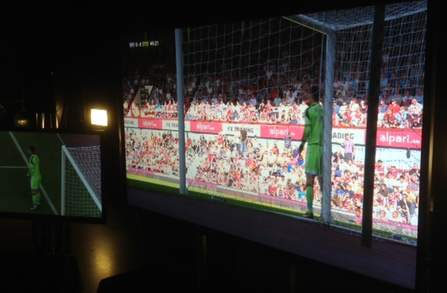The dream of native 4K being broadcast over air just came a little bit closer following the DVB Steering Board’s decision to approve the DVB-UHDTV Phase 1 specification at its 77th annual meeting.

If that sounds boring that’s because maybe it is, just a little. Nonetheless it’s a significant development because the new specification, which updates ETSI TS 101 154 (specs that govern Video and Audio Coding in Broadcasting Applications based MPEG-2 Transport Stream), sports an HEVC profile for DVB broadcast services that fulfils the delivery requirements of UHDTV (ultra high-definition television) Phase 1 and other formats.
DVB-UHDTV Phase 1 hastens the coming of 4K broadcasting because it allows for images of up to 3840 x 2160 resolution – four times greater than regular HDTV – at a maximum 60Hz. The new specification will also give bit depth a serious kick up the behind, up to a maximum of 10 bits per pixel, while leaving room for the possibility that UHDTV Phase 2 might use higher frame rates, something that would further enhance the UHDTV Phase 1’s image quality.
DVB Steering Board Chairman Phil Laven told attendees that HEVC was vital because the technology is key to enabling 4K broadcasting. “Not only [does HEVC] open the door to the age of UHDTV delivery, it also sets the stage for Phase 2, the next level of UHDTV quality,” said Laven.
All in all it was a busy day for the DVB Steering Board, which found time to approve two more specifications besides the “biggie”. This includes a new specification for Companion Screens and Streams, Part 2: Content Identification and Media Synchronisation, which unsurprisingly is focused on identifying and synchronising broadcast content on TVs with ‘timed content’ on second screen devices.
Finally, the board also gave its thumbs up to the snappily-named ‘MPEG-DASH Profile for Transport of ISO BMFF Based DVB Services over IP Based Networks’ specification. The DVB Steering Board assures us that this is a rather important development, as the specification defines TV content delivery via HTTP adaptive streaming, and covers a wide range of options and use cases.
For example, audio-visual content transmissions will be based on the ISOBMFF specification, for which video and audioc codecs that are compatible with MPEG-DASH have been chosen. Meanwhile, subtitle delivery will be based on XML, while conditional access will be MPEG common encryption-based. The board says that it’s new MPED-DASH profile makes it less complex for implementers as it reduces the available options, something that will help facilitate its usage in a DVB environment.
All that’s left now is for the ICT standards body ETSI to formalise standardisation of the new specifications, after which the industry can kick on and start delivering some much needed 4K content.